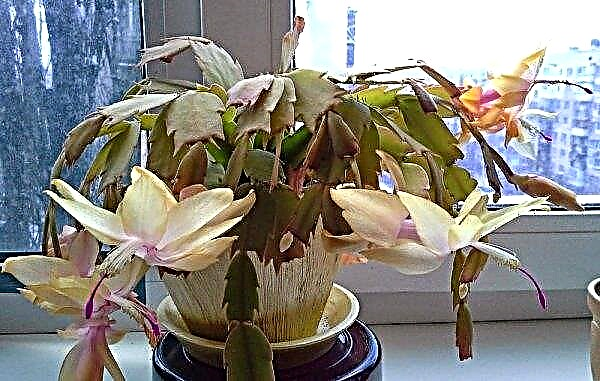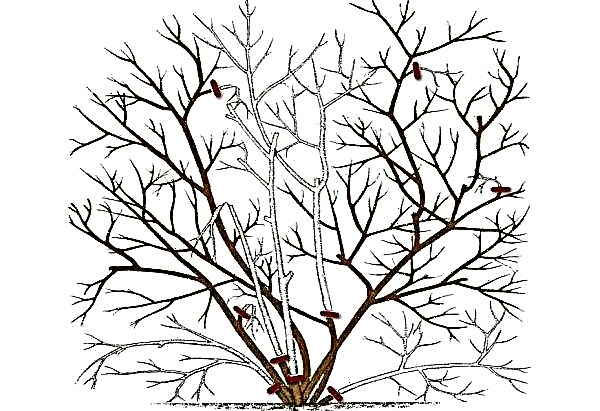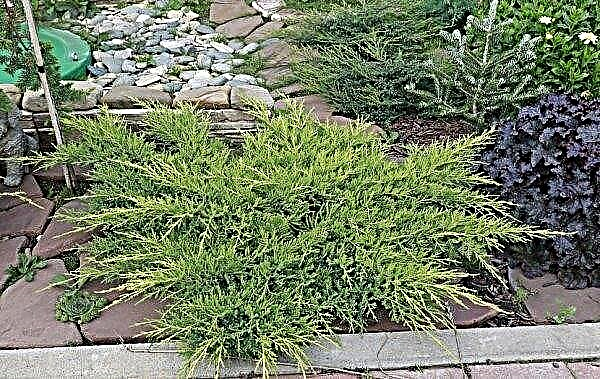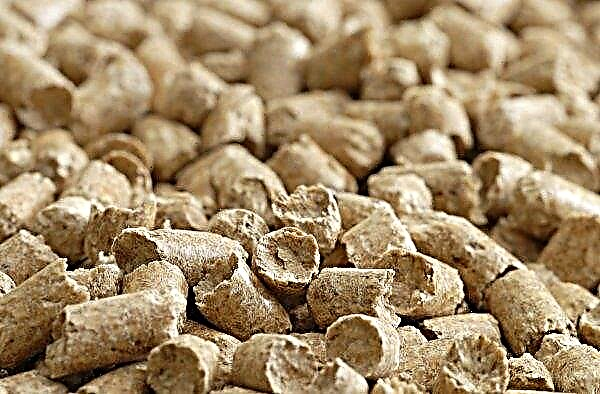A decorative mill is able to make a personal plot stylish and unique. Having become the central figure in landscape design, she will bring the indescribable country spirit to the garden composition. From this article you will learn how to make this element of decor with your own hands and what materials are better to use, as well as how you can apply a mill construction with a waterfall in the design of the site.
Advantages and disadvantages of a decorative mill
The mill as an element of decor is able to convey the individual atmosphere of the Renaissance style, which is popular in the traditions of Western peoples, and also add rustic color to your site. The old mill is a large object that attracts attention regardless of additional details.
 Its most important advantage is unusualness, since few people in the garden will see such a detail. This design and texture gives the garden a certain authenticity and pacification. It perfectly complements the reservoirs. Also, the mill can be used as a small warehouse for garden tools.
Its most important advantage is unusualness, since few people in the garden will see such a detail. This design and texture gives the garden a certain authenticity and pacification. It perfectly complements the reservoirs. Also, the mill can be used as a small warehouse for garden tools.
The only drawback may be the care. If your structure is wooden, then it should be carefully looked after. The tree can deteriorate from weather conditions, even if it is varnished, it may crack over time. The material can rot from moisture, as well as be damaged by bark beetles. Treat the mill with special solutions and monitor its condition.
Did you know? The first mills invented by the Persians appeared in Holland around 890 and all were water. The wind structure was first built in 1180.
Where better to place and what to combine
Garden mills come in many sizes. An object of this type can be placed, slightly departing from the high fence, which will create the effect of a fortress. If your garden has a small pond or lake, then the mill construction will perfectly complement this composition. Try not to overload it with large elements.

The stone-lined mill will look great, besides such designs can be supplemented with old-style garden cars, sophisticated benches, mini-bridges across the pond or high lights. Clay animal figures can also be harmoniously used to complement the overall composition.
Artificial nests with chicks, storks on long legs, herons are perfect. The little gnomes located at the structure or accompanying the stone path to it will be able to transfer to the atmosphere of a fabulous forest and also brighten up this complex.
At the mill itself or nearby you can place wooden containers in which to plant small flowers of bright colors. So you can achieve contrast, especially if the design is dark chocolate color. Such shades as fuchsia, white, yellow are perfect, you can even combine several colors.
How to make a do-it-yourself mill
Thanks to the huge amount of information, modern summer residents began to apply original ideas for designing their garden plots. As a result, decorative mills began to appear in summer cottages.
Ready-made copies are sold in garden centers, but their price is quite high. Almost everyone who has elementary construction and carpentry skills, and is also full of interesting ideas, can create such creations.
Important! Regardless of the size of the structure, a large weight exerts pressure on the connecting sections. In places where the blades and the roof are attached, the frame should be strengthened to avoid damage.
There are not so many varieties of these garden structures:
- wooden;
- stone;
- with a waterfall.
Their sizes can range from 0.5 to 1.5 m. It all depends on whether it is just a design element or is it supposed to be used for business purposes.
Use cases may be as follows:
- hiding around the perimeter of the site of taps for irrigation, pipes and other unsightly objects;
- like a flower garden;
- as a country shower or a bathroom;
- to highlight the children's play area;
- for preserving garden tools.
Often the mill is erected in the form of a trapezoid. Rotating blades are mounted on the facade of the building. The construction consists of a reliable foundation, a strong body, roof and blades.
Making a stone mill
A stone windmill will last much longer than its wooden counterpart. And it does not require special costly care. It is built from the materials that remained after the construction of the cottage (brick, cement-sand mortar, decorative facing stone, rail and timber for the manufacture of blades).

For the stone variety you will need materials:
- brick;
- sand, cement;
- stone for decoration;
- laths for blades and hairpin;
- roofing material;
- nails, nuts, screws;
- plywood;
- timber;
- moisture resistant glue.
Tools are standard for any type of construction, only a mixer and bucket for mixing cement are still needed. For decoration using natural stone, laid on a moisture-resistant glue. Nearby, all kinds of plants will look beautiful.
The construction process of a decorative stone windmill consists of several main stages:
- Foundation laying. For this species, it is necessary, because the structure, although it has a decorative function, is nevertheless capital and thorough. Dig a pit about 50 cm in depth, width and length, lay reinforcement and pour mortar. Next, it is necessary to suspend further construction until the foundation completely dries.
- Directly erecting a mill base. Used for this brick and mortar. It is imperative to check that the structure is even with the help of a building level. The shape of the mill will be trapezoidal. You should not forget about the mount, where the blade pin will subsequently be inserted. It needs to be welded to the plate, with which it will be easier to fix it in the wall.
- The construction of the propeller and the wings of the mill. To build these elements, you need to cut a circle from a plywood sheet, in the middle of which a hole for the stud should be drilled. Further, the wings of the mill are made from the slats, at the ends of which the blades are nailed from the beam. Treat wooden elements with impregnation and paint.
- The roof can be made of plywood or iron.. It will look organically gable. Lay tile on top.
- Facing the building with decorative stone or tile. They put such a tile on a special waterproof adhesive, applied in a thick layer to avoid the formation of voids under the facing material. You must remember to attach the blades to the hairpin.
- Decoration of the site near the windmill. The more beautiful greenery planted around the mill, the better it will fit into the surrounding landscape. Also, special illumination carried out in the mill may look unusual, then when the darkness falls, the windows will glow.
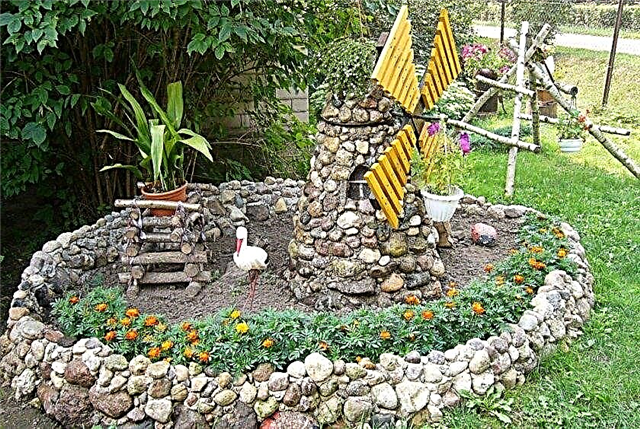
Making a wooden mill
Before building a wooden mill, the following must be considered:
- For the construction of the structure it is better to use a pine.
- A preliminary drawing will help, it is convenient to note the completed construction stages on it.
- It is necessary to treat all the elements with special moisture-resistant impregnation.
- A windmill is installed on paving made of stone, because its bottom can begin to rot over time.
The necessary set of tools is standard for the construction of wooden structures:
Check out

- saw;
- sanding machine;
- hairpin;
- drill;
- screwdriver;
- roulette.
The following materials are needed:
- plywood;
- timber;
- Reiki
- wooden corners;
- lining materials;
- set of screws, nuts, screws.

Having prepared all the materials and tools for the job, you can begin to make the case. Saw 2 bases of different diameters from a plywood sheet. Fasten the slats with the screws to the corners of the larger, lower base. Sheathe the frame with material prepared for this.
To build a roof, 2 triangles are cut out of a plywood sheet so that they fit the size of the mill frame itself. Next, connect the triangles with rails to each other so that a roof is obtained. Attach it to the body of the mill. Drill a hole in the front of the roof, so that later a mounted propeller with blades can be mounted in it. On the side, the roof is also sheathed independently.
Did you know? In 2019, a recycled plastic whale sculpture was created in the United States. The material for creation was plastic bottles, toys, packaging and other garbage, the length of the product was 25 m, and the height was 4 m.
For the construction of the blades, two slats are folded with a cross, connected, and a hole is drilled at the intersection with a drill, a pin is inserted into it, and fixed. Next, you need to nail the material prepared for the blades onto the rails.
Insert the resulting propeller into the hole prepared for this in the roof and fix it. Joints on the ribs must be closed with special corners. After construction, the building can be painted, varnished. So that it looks harmoniously on the site, you can plant flowers and shrubs around.
Video: making a wooden mill
Mill with a waterfall
Previously, mills were used to grind grain into flour. In order to do this, the grain was lifted up the mill, then through the trench it entered a special compartment - a millstone. If the mill is water, then the water coming from the flowing pond rotates the wheel, and the millstones began to grind the grain. For both windmills and watermills, the energy of nature is used, only in the first case it is wind, and in the second it is water.
Decorative mills do not have such a task. They perform only aesthetic function. It is logical that for this variety on the plot you need running water, but since at best there is a closed reservoir in the territory of the country garden, a pump can come to the rescue. With it, water will flow to the wheel and it will spin.
Important! If the construction is large, then the foundation should be erected first. It must be strong and stable.
A water mill always consists of the following elements:
- a decorative house or just a frame that will support the wheel;
- wheel with blades;
- gutter;
- axis for wheel rotation.
You will need a certain set of materials:
- plywood;
- wooden beam;
- kernel;
- material for the gutter (pipe cut along, tile);
- a set of screws, nails, nuts, bolts of different sizes;
- varnish or paint;
- impregnation.
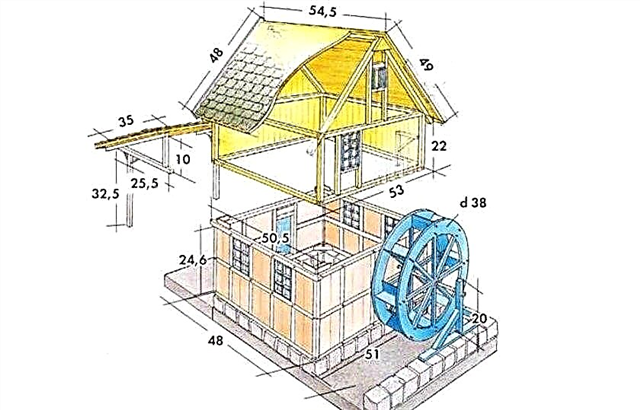
Before you begin construction, you should take care of the water supply system. If there is a reservoir on the site, then you should choose a site near the shore. If the arrangement of the artificial reservoir is only in plans, then it is necessary to think over a place for it and for the future mill.
To start the mill in operation, it is necessary to provide a constant flow of water or to build a view that will work only during rains.
There are several ways to inflow water:
- Place the structure under the rain gutter.
- Due to the relief of the site, you can build a mill, the water to which will be supplied from the highest point of the site.
- On a flat garden, water can be pumped.
- If there is a body of water with running water, the mill wheel will move due to the flow.
The stages of creation are as follows:
- Creating a drawing will help you calculate the dimensions of all parts.
- Making wheels from plywood or other improvised means. The blades are built from a wooden beam. The mill wheel consists of two identical circles, interconnected by blades, which are located at an equal distance from each other, and it is also necessary to make a hole in the center for the axis so that the wheel rotates.
- The construction of a decorative miniature house. It is recommended to use it as a room for storing garden tools. The base of such a house can be poured with mortar, and then erect a frame of wooden battens, sheathe the walls with clapboard. The roof can be laid with tiles laid on plywood.
- Since the water mill constantly involves contact with water, therefore it is necessary to treat all its elements with a protective coating, the treatment must be repeated once every several years.
- In the wall of the house you need to drill the hole necessary for fastening the wheel, fix the wheel on the axle. Position the structure on the shore of the pond, while the mill wheel should fall under the stream of water. Now, through the gutter, water is supplied to the blades of the mill.
- You can plant hygrophilous plants near a pond, lay out stone paths, and place sun loungers nearby.
Video: making a water mill
It remains to install the mill in the chosen place and decorate it as desired: open it with varnish or tint it with paint. Next to such a building, any greens and flowers look beneficial. Decorating this type of mill is for the most part decorating the house itself, here you can show all your imagination.
Also, plants, natural stones will serve as decor elements. Directly, a reservoir can also serve as an object for decoration: various types of aquatic vegetation, wooden bridges, stone paths, various figures.
Thus, decorative mills can be a great design decision on your site. In choosing the materials from which this element is made, you can give preference to stone or wood, as well as install the structure along with a waterfall. Among the main advantages it should be noted attractive appearance. With such a central figure, your garden will not be left without attention.

